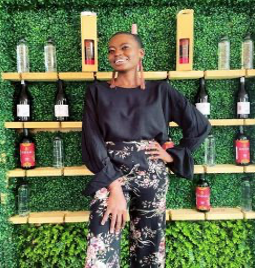E-cedi: Ghana’s new digital currency
Ghana has announced its venture into a digital currency as part of the country’s digitization agenda. This makes Ghana one of the first African nations to announce that it’s working on a digital currency. It has made more progress than any African nation, including South Africa, which is still in the research stage.
Ghana joins the growing list of African and Caribbean nations considering adopting Central Bank Digital Currencies (CBDC). The Bank of Jamaica currently is conducting a seven- month CBDC pilot with plans for a full rollout in 2022. “The Bank of Ghana was one of the first African Central Banks to declare that we were working on a digital currency looking at the concept of an e-cedi,” Dr. Ernest Addison, Governor of the Bank of Ghana said.
Addison said his organization is in the advanced stage of introducing a digital currency called e-cedi. He said before it’s released into circulation, the CBDC would first go through three phases: designing, piloting, and implementation.
Ghana’s e-cedi has gone through the first phase, which involved the design of digital money. He further noted that the final stage will involve piloting the e-cedi to see how feasible it will be. It is backed by the state, which makes it a lot safer for digital currency skeptics. (Source: Face2Face Africa)
Katlego Komana, a 23-year-old entrepreneur and second-year Master of Medical Sciences Wits University student from Mankweng in Limpopo is making her mark in the coffee and wine markets respectively, with her company Kay Holdings. Kay Holdings, a premium female and Black-owned company, was founded in May 2019 and specializes in Kay Coffee and Kay Wines.
Initially, her sole purpose was to tap into the coffee industry but Komana was drawn into the wine industry too. “Well, I am a coffee lover, and I have always wanted to tap into the market,” she said. “I was out with friends, and then the concept of manufacturing wine popped into my mind since research has also shown that there are few Black-owned wine brands, particularly female-owned. I felt the need to fill the space.”
Komana was inspired by Beth Malatji, founder of ReBeth Wines. “Her story gave me confidence that I could do it too. We source specialty coffees from around the world that are traceable to the Rwanda Farmers Coffee and carefully roast them ourselves. I am also working with the Frater family yard in Cape Town. Our collaboration transpired as I made a proposal to become their partner since I have a solid foundation of knowledge in wine.”
Though she is still in the process of manufacturing both, Komana sources ethically produced products from artisans in Africa, as well as organic and natural wines from independent winemakers with admirable stories. But she also maintains that it is quite hard to tap into the wine and coffee industries, as there are challenges one faces such as sustainability of the business, funding, and access to the market, which makes it difficult for entrepreneurs to launch their products. The self-funded venture was also severely affected by the nationwide COVID-19 lockdown and had to lay off staff in order to maintain the business.
Komana, who also holds an honors degree in biological sciences from the University of Limpopo, is also the founder of The Limpopo Business Club – a non-profit company established in June 2019 to drive the development of youth entrepreneurship. In the long run, she hopes “to become the established premium wine and coffee brand across the country and furthermore around the world and to create job opportunities for the youth” (Source: Vutivi Business News)
Ghana has become the first West African lithium producer to sign an agreement with London-based IronRidge Resources and Piedmont Lithium to fully fund and accelerate the Ewoyaa Lithium Project in the Central region. The project is IronRidge’s Ghanaian Cape Coast Lithium Portfolio, which covers 684 kilometers. IronRidge is an Africa-focused minerals exploration company with a significant lithium pegmatite discovery in Ghana.
However, many in Ghana are skeptical about this deal and question how it will ultimately benefit the masses.
Lithium is in high demand due to modern technology. The most important use of lithium is in rechargeable batteries for mobile phones, laptops, digital cameras, and electric vehicles. It is also used in some non-rechargeable batteries for things like heart pacemakers, toys, and clocks. Lithium and its compounds also have several industrial applications, including heat-resistant glass and ceramics, lithium grease lubricants, flux additives for iron, steel, and aluminum production.
Vincent Mascolo, CEO of IronRidge said, “With Piedmont’s established relationships with US-based automakers, this is an outstanding opportunity for IronRidge to fully fund its industry-leading Ewoyaa Lithium Project through to production. “With the support and investment of Piedmont, along with the African mining expertise of IronRidge’s major shareholder Assore Limited, we look forward with great excitement to developing this industry-leading asset. Piedmont is developing a world-class integrated lithium business in the US and will bring vast experience and expertise to the partnership as we prepare to fast-track Ewoyaa to production.” (Source: Joy Business)
The elementary school student stood up, pulled down her face mask, leaned into the microphone, and swallowed hard before trying to spell the word “discover” in French Creole. “D-E-K-O-V-I” she said. Seconds later, the teacher announced, “Sorry, that’s incorrect.” The word, she said, is “dékouvè.”
Her difficulty with the language is far from unique in the island nation of Dominica, which is trying to preserve and promote that centuries-old creation by Africans who melded their original tongues with those of the European plantation owners who held them in bondage. Kwéyòl, as it’s known in Dominica, is one of many Creole variants spoken on more than a dozen Caribbean islands — complex cultural creations that were long considered informal, inferior, and broken languages spoken by uneducated people.
“Your ability to use the European language, be it English, French or Dutch, is seen as an indicator of educational attainment,” said Clive Forrester, secretary of the Society for Caribbean Linguistics and a linguistics professor at Canada’s University of Waterloo. “The attitudes have improved, but the underlying feeling is still there. Almost everything related to African culture is seen not as prestigious as European culture.”
A push to save and promote Creole languages began in the 1960s when the Caribbean experienced its own Black Power Movement, Forrester explained. “Different artifacts of Caribbean culture, the music, the spirituality, the languages, all of those things were being reexamined, and in a sense, elevated by cultural advocates,” he said. “The language came along for the ride.”
Officials in Dominica, an island of some 75,000 people, hope to change negative perceptions. They’ve started teaching Kwéyòl in 16 of the island’s 56 primary schools this year in brief snippets: “A five-minute pause for the Creole cause.” Officials say a lack of Kwéyòl-speaking teachers hinders a broader program. To help preserve the language, Dominican scholars have published two Kwéyòl dictionaries — the newest 150 pages long — and are working on a third as they debate how to say words like “computer” or “flash drive,” which never had a Creole equivalent.
According to Charlene White-Christian, modern language coordinator for Dominica’s Ministry of Education, students learn the language’s roots and simple words and phrases, and some compete in a spelling bee introduced 11 years ago. “We don’t want to lose it,” she said. We view the language as part of our culture. It’s nothing without the language.” White-Christian is still learning more of the language since her parents never spoke it.
Pride in local Creole languages has grown in recent years, although only a few Caribbean nations have declared them official, including Haiti, Aruba, and Curacao. Only a few offer regular classes, and experts say they don’t know of any place where it’s the primary language of education.
The version is spoken in Dominica, and Saint Lucia originally mingled African languages with the French spoken by the first colonists and occasionally a bit of the Indigenous language. Dominica was a French colony for 48 years and a British colony for 215 years, which led to the rise of English Creole on the island. English-based Creoles range from the Gullah of coastal North Carolina to the Patois of Jamaica.
English Creole may have developed in Barbados in the late 1640s after a local population of enslaved Africans grew larger than that of whites, said Hubert Devonish, a Jamaican linguistics professor and member of the International Center for Caribbean Language Research. He added that French Creole might have first developed in St. Kitts, the first French plantation colony.
The most widely spoken French Creole is in Haiti, a nation of more than 11 million. A few thousand also speak the Kouri-Vini Creole of Louisiana, also once a French colony. Linguists say some people in rural areas of some nations, including Haiti and Jamaica, speak only Creole languages, often because of a lack of formal education.
Papiamento, a Portuguese-based Creole, is used in Aruba and Curacao, where it was adopted by a local Sephardic Jewish community, Devonish said. The languages evolved across the centuries, affected by education, migration, and the relationship with former colonial powers. Some people abandoned Creole to escape poverty and discrimination, while some of the educated elite eventually seized upon them as symbols of national identity and campaigned for them, Devonish explained. In many Caribbean nations, “there is a broad acceptance that to participate in national life, you have to talk the languages of the people,” he said.
That has not yet happened in Dominica. Experts aren’t sure why the language eroded more in Dominica than on other islands. Some suggest it might be due to a teaching emphasis on English or to the presence of a competing English-based Creole known as Kokoy introduced by workers from other islands in the late 19th century and spoken by residents in the island’s northeast.
Forrester said the most at-risk language in the Caribbean is a dying French Creole in Trinidad spoken only by a handful of aging people despite attempts to revive it. A Berbice Dutch Creole in Guyana died more than a decade ago.
Social media now plays a role, with teens and young adults posting in Creole, said Forrester, whose first language is Jamaican Creole. He noted that there’s a certain pride in using Creole but that it’s more pronounced in people who also have mastered English. “Languages are living things,” he said. “No living thing lives forever.” (Source: Caribbean News Now!)
African Diaspora Report
Reading Time: 6 minutes


